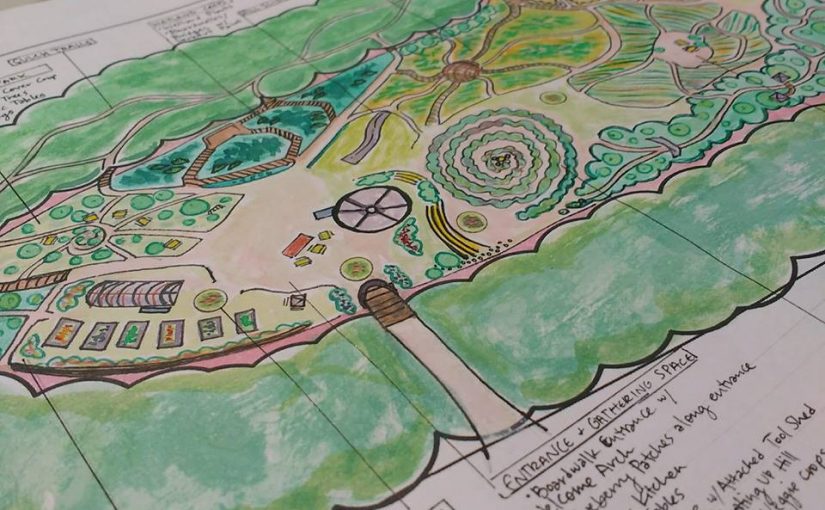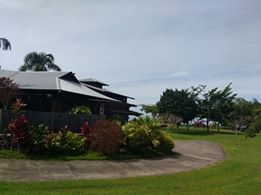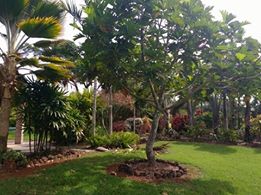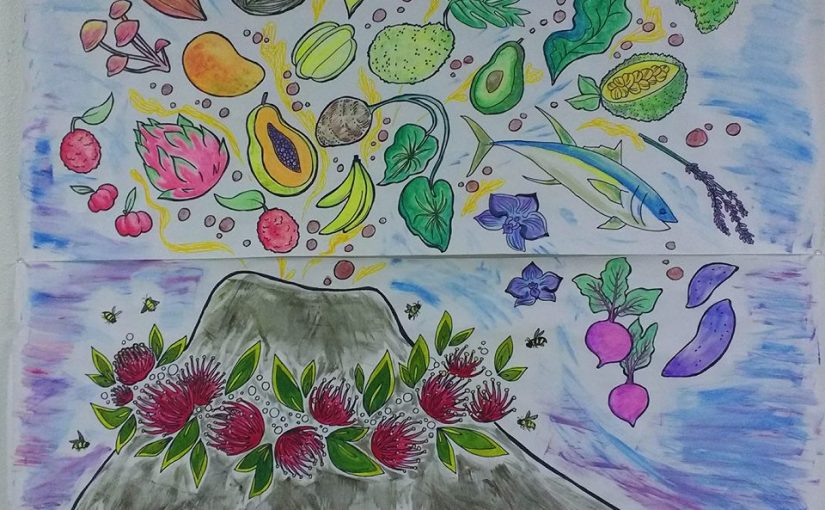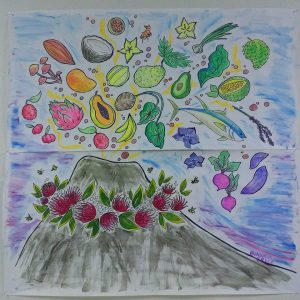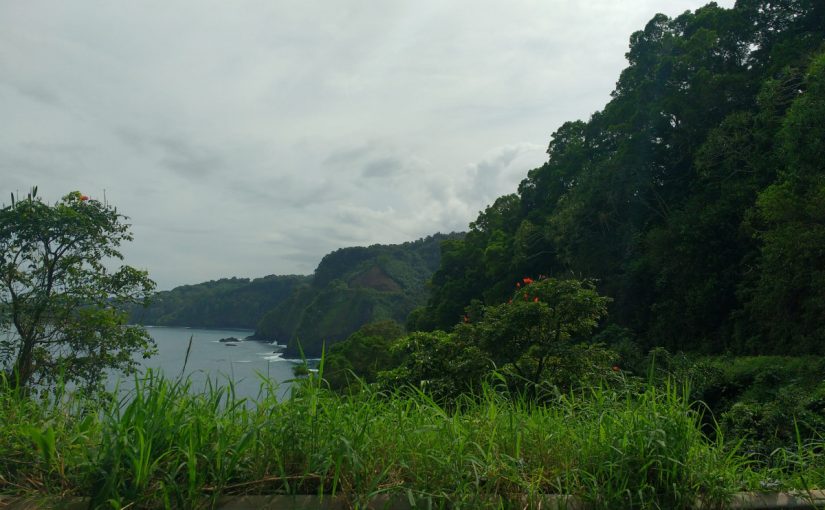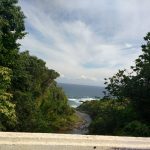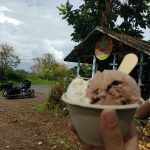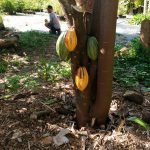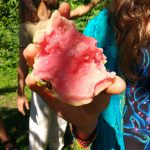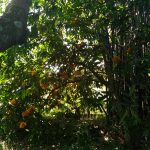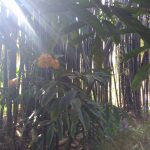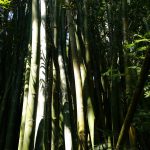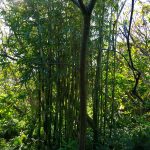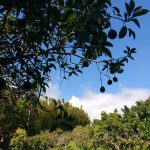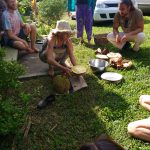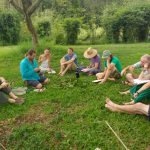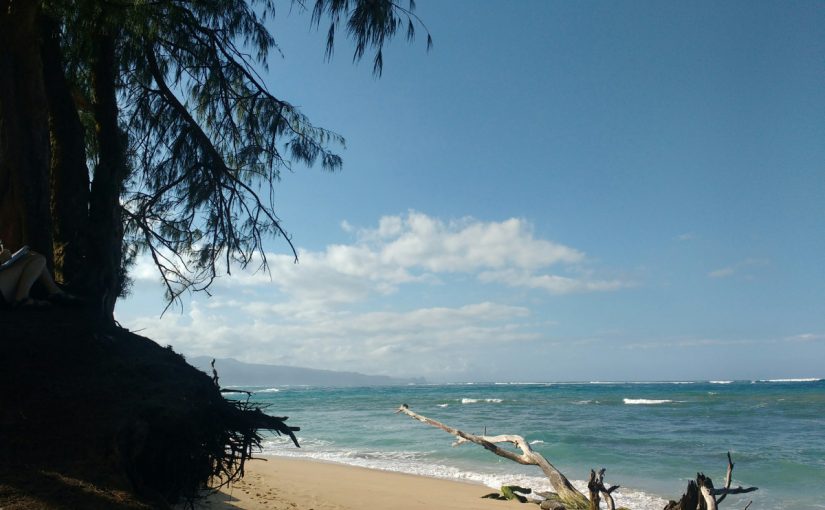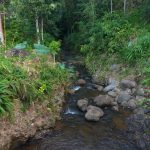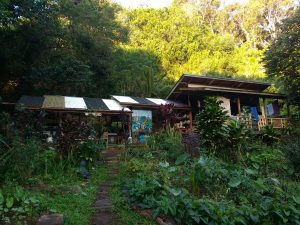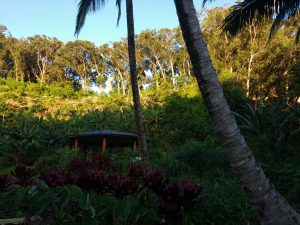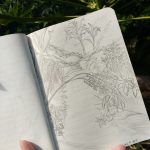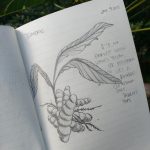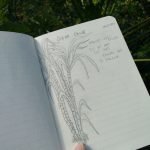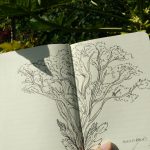This week I get to actually design 2 acres of a property! On Monday with Adam I finished drawing the plans for the hill. On Tuesday Jenny and Adam asked me to come up with a concept for two acres at the bottom of the property. This property ends at the back of the monastery school in Haiku. Jenny wanted to alot two acres for the kids of the school to come and use for educational purposes as well as allowing for a produce market and meeting space. The directions I was given were to include an Aloha Lounge for class meetings and a space for canoe crops to grow. If I haven’t mentioned this before, canoe crops are the original Hawaiian food crops that were brought with them on canoes from Polynesia.
So, I first determined the open gathering space which would be close to the school gate and easy to get to from parking up the road. This space includes the Aloha Lounge, an open tent structure with a hole in the middle for fires, an outdoor kitchen, picnic tables, and a tool shed near where workers might come to have lunch so that they can store their tools on the way. Then to the left would be a demonstration vegetable garden with raised beds and a hoop house for easy access for children. There would be a stone wall with a shelf for pollinator plants to deter vegetable theft and attract pollinators since there would be no beehive on site. I also included a structure for seed exchanges to get the children excited about growing their own food as well and trading seeds. Then to the top left of the acreage near the walkway from parking, there would be a picnic area with a spiral pathway, short covercrops to run through, and picnic tables under shade trees. This serves as a resting place from the long walk of parking and as a natural resting place for kids and adults to share food. The tips of the property near the parking walkway would be flanked in canoe crops for tropical aesthetics. From the top of that walkway some paths would branch off to trails for children to run around through the natural gulch that would be manicured for safety. Then below the gulch would be a wetlands area for Lo’i or kalo growing with boardwalks, bridges, and a lookout for easy access to all that a wetland has to offer. Since this zone sits at the near bottom of a steep, it would collect water from the rest of the property easily. Then to the right of the Aloha Lounge is a man made hill with park stadium seating to allow for a gathering place and create a stage for events. Up the steps is a spiral herb garden that can act as a meditation zone with stones in the center as well as a fun run around for kids. This also allows for easy access to each herb that needs to be cared for since they flank a wide path. Below this is a food “jungle” of canoe crops with many paths and treehouses connected by a bridge. Above the spiral garden are two zones of crops, one of root and floral crops and one for traditional row crops. This variety allows for a multitude of learning opportunities for the children. The left of the root crops taper out the rest of the hill so I put a big slide for kids to take advantage of. The root crop zone also has edible arbor pathways leading to a central trellised hangout zone. Fruits like lilikoi or floral vines like jasmine can grow here. The top right of the property has a bamboo grove for natural building crops and has surprise seating coves between bamboo bunches- a feature that I fell in love with at Laleima Farms in Kipahulu. Finally to the furthest right of the property starts a grove of demonstration fruit trees and a firmly populated grove of windbreak trees to prevent exploring further into the property where land will be leased for farm plots. Before any major groupings of sections I put small gardens that would serve as meeting places for school groups so that no one would get lost.
The last half of the week I scaled, drew, inked, painted, and labeled this design on an 8.5″ x 11″ sheet of paper for presenting. Though this is a concept design, it will eventually be the backbones for a design that does work with the school and open opportunities financially and culturally to connect with the local community. This Farm Education Center would serve as an event venue for the school and incorporate farm education into daily activities. This would also be a wonderful place to host summer tours and camps for kids on the island as well as serve as a kid friendly wonderland to the client’s growing family. I am so extremely proud to have been trusted with this much responsibility and Jenny is already helping me to use this and more that I’ve done for her toward my Permaculture Design and Visual Design portfolio. My last task was to detail an outline of what had been decided for the website so far so that Jenny could continue working on it with a professional designer.
On Friday evening Jenny took Philip and I to an art gallery opening at the Hui Museum and to dinner where we ran into Spencer and celebrated the months that we spent together. It was a bittersweet ending to a truly magial few months, but I know I will work with Jenny again an I’ve made too many friends and connections in Maui to stay away for too long.
